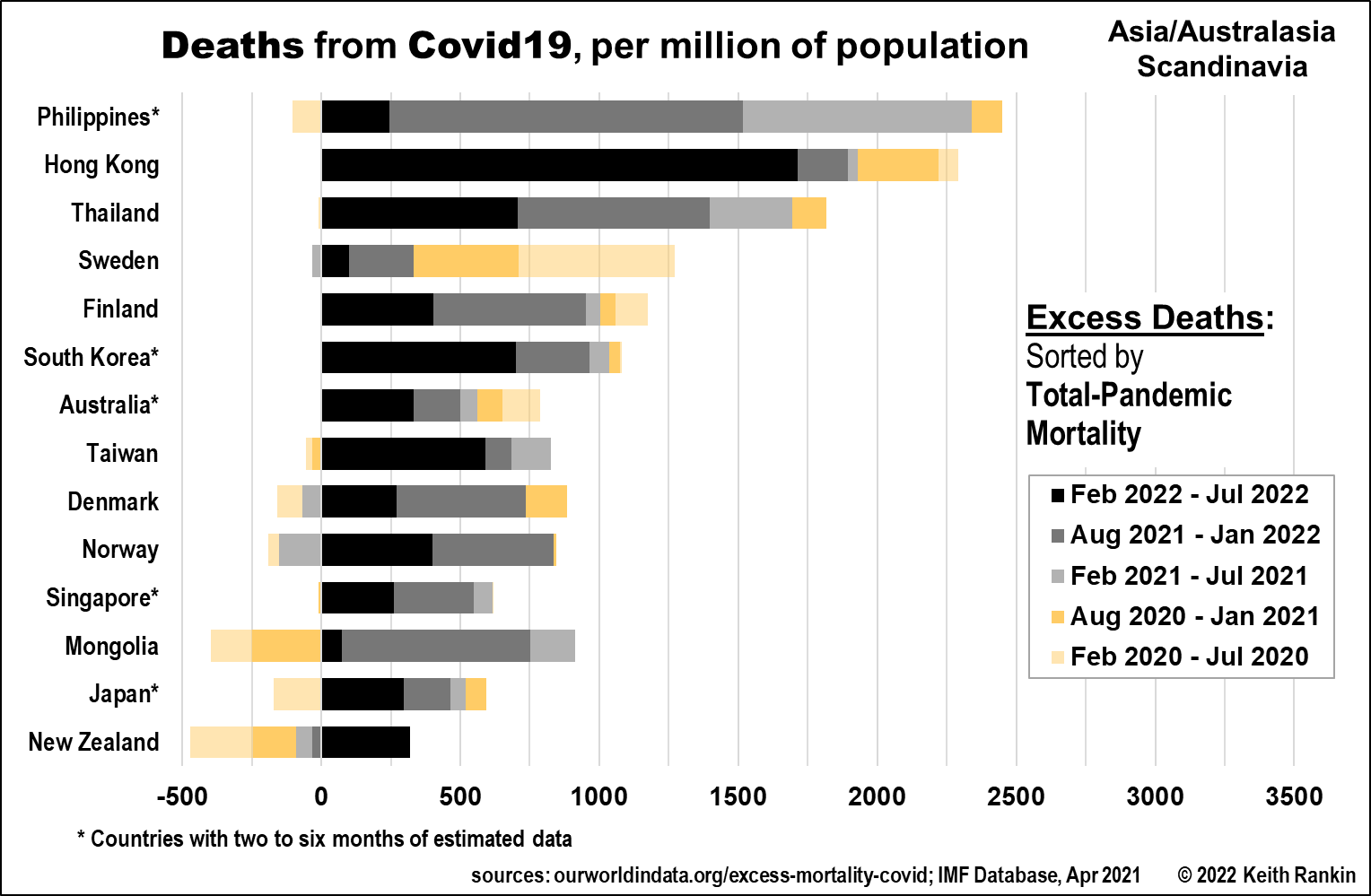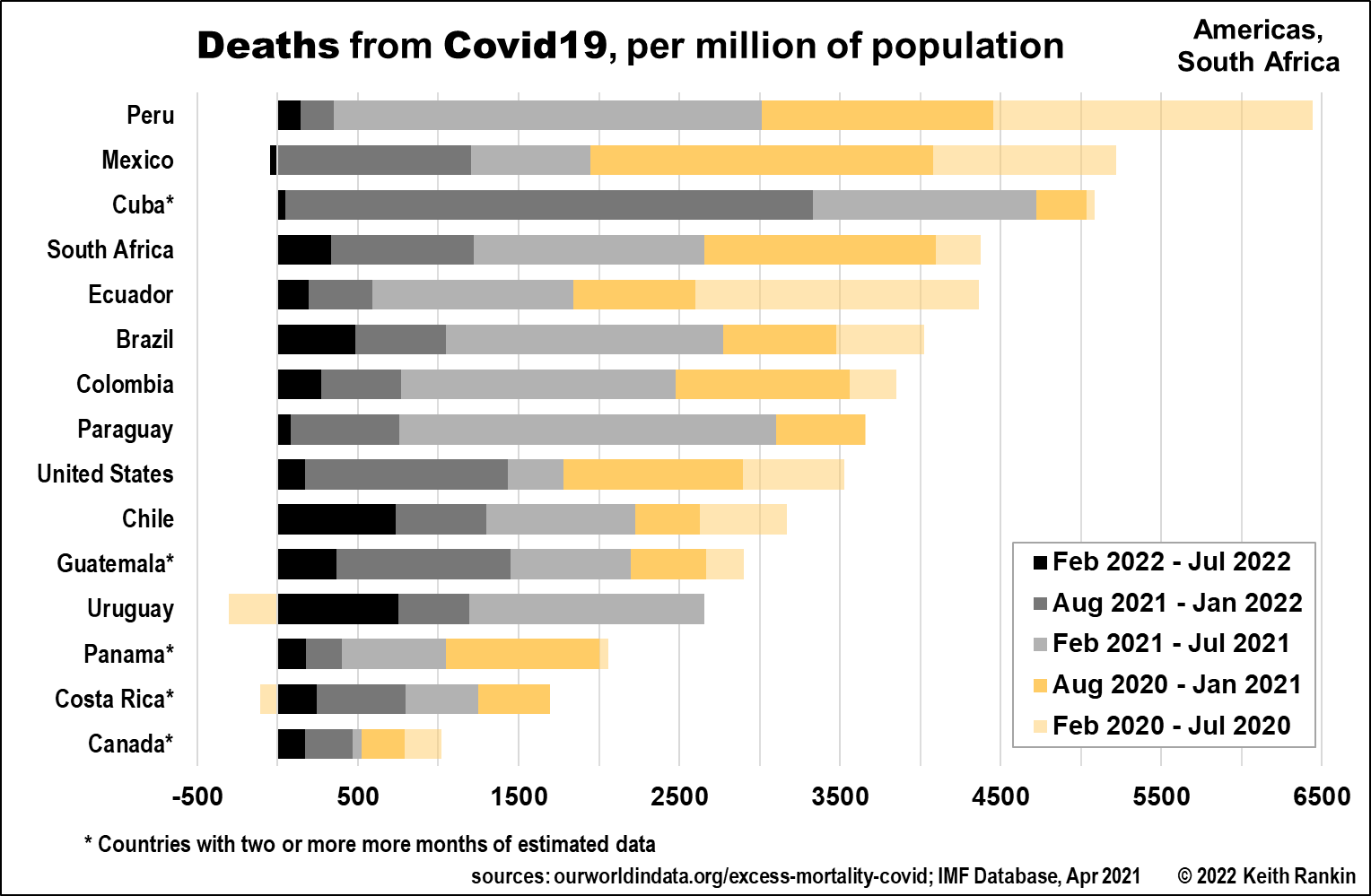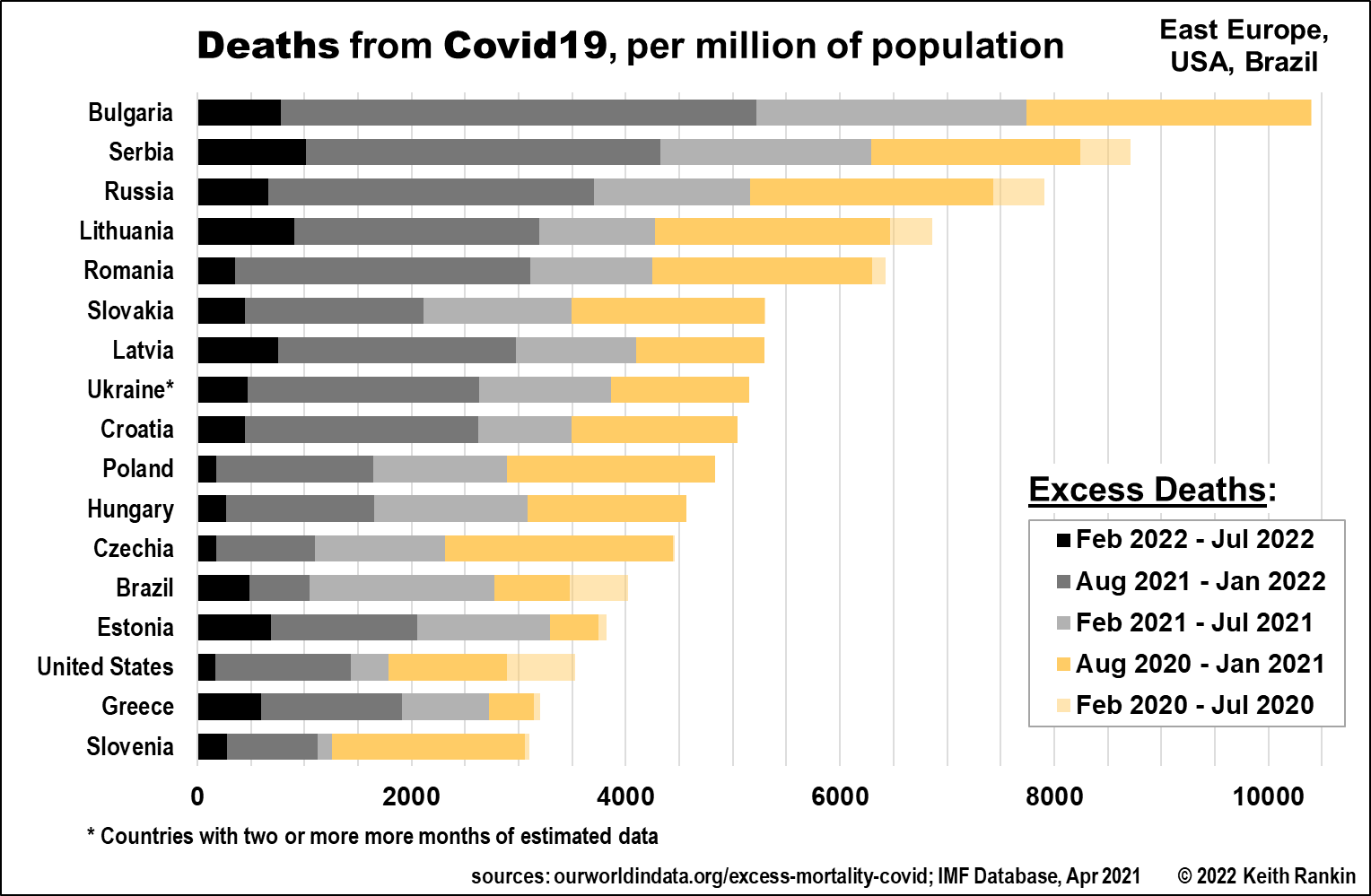Analysis by Keith Rankin.
Covid Excess Deaths: East Asia in context – These charts show excess pandemic mortality so far for a wide range of countries, geographically themed. The charts are structured to emphasise deaths in 2022 and 2021, and to facilitate comparative analysis between regions. (General mortality data is lacking for Africa and South Asia.)

The first chart shows Australasia and East Asia, with Scandinavia providing context. (While Malaysia and Indonesia are missing because of a lack of supplied data, indications are that Malaysia’s excess death profile might be an average of those of Philippines and Thailand. Indonesia is more speculative, though estimates from The Economist and WHO suggest that Indonesia has suffered worse than the United States, maybe worse than Brazil, and certainly – unlike USA and Brazil – with the vast majority of its deaths in the 12 months to June 2022.)
From New Zealand’s point of view, the 2022 ‘performance’ is comparable with Australia and most of Scandinavia; New Zealand was much better in 2021 though. The worst performers in these regions over the last 12 months have been much of East Asia, Finland and Norway. Japan is most like New Zealand, with its worst half-year to date being the most recent one, suggesting that much of Japan’s and New Zealand’s eventual covid stories are yet to be told.
Philippines needs a special mention. It’s a country with a substantial demographic and labour force connection to New Zealand; it’s also comparable in terms of the severity of its top-down anti-covid public health mandates. On Al Jazeera News today, one item indicated that Philippines has been in shutdown for two years, featuring a succession of lockdowns which are just now ending. (See links to Al Jazeera stories at the end of this commentary.) Of most significance was that children there are only now returning to school after a two-year closure; and that the costs of this lost education may prove to be huge.

We should also note that the 2,300 excess deaths per million in the last 18 months in Philippines is in a country with a young population, making Philippines’ experience somewhat different to that of East Europe. (For East Europe, see final chart below; one similarity though is that both Philippines and East Europe are exporters of young labour.)

This next chart, to the same scale as the first one, allows for comparisons to be made with West Europe and North America. Greece is the country here which is most like Philippines in the earlier chart, having a substantial majority of its deaths in 2021 and 2022 following an apparently successful 2020. Greece is also a country that New Zealanders connect with, yet is almost never mentioned by New Zealand’s epidemiologists.
Germany, Austria, and Netherlands are not too flash either, having more than half of their excess deaths in 2021 and 2022. Spain, France and the United Kingdom have done significantly better than these from 2021, having done worse in 2020.

The next chart, on an extended scale, shows the Americas (with South Africa). Canada shows a ‘performance’ comparable with Ireland and Scandinavia. United States looks much like Latin America. Three countries which did pretty well in 2020 did poorly in 2021 and 2022: Uruguay, Paraguay, and Cuba. (Cuba’s actual numbers for 2022 are highly speculative.) In many ways these ‘Latin’ countries are like Philippines, in culture, demography, socioeconomic circumstance, and in economic proximity to the United States. Though only Cuba has been like Philippines epidemiologically, with the majority of its deaths being in late 2021. Both countries actively fought-off the virus for a long time, only ‘surrendering’ to it after a year-and-a-half (or so).

The final chart, on an extra-extended scale, shows the underacknowledged epicentre of the covid pandemic, East Europe. In all countries in East Europe, we see that the first wave of the pandemic (February to July 2020) was fended-off successfully, I understand through government mandates. The crisis came late in 2020 as the perpetuation of these mandates became untenable. East European populations were substantially less able to cope, owing to both economic and immunological weakness, than were West European populations.
On both sides of Europe, covid’s initial hit was during a shoulder season, neither winter nor summer. East Europe has the look of a region with a substantial general-immunity deficit in the autumn of 2020. Most countries in the region now appear to have restored general-immunity, but at great cost. For the most recent period (shown in black), February to July 2022, New Zealand falls between Hungary and Romania. Some countries in this region have lower recent excess mortality rates than New Zealand; this was especially true in July.
East Europe has an unusual demography, dominated by older people, as the region bleeds its younger population to West Europe. East Europe was already in dire straits before Covid19 hit. Indeed, it has been becoming the Dixieland of the European Union. We ignore East Europe’s stresses at our peril; those stresses are the crucible of world wars.
(A note about Russia and Ukraine. Russia’s reported deaths have dropped dramatically since it invaded Ukraine; before this year, Russia’s aggregate mortality data could be trusted. And Ukraine’s last reported aggregate of monthly deaths was in January.)
*******
Keith Rankin (keith at rankin dot nz), trained as an economic historian, is a retired lecturer in Economics and Statistics. He lives in Auckland, New Zealand.
Al Jazeera news links:
https://www.aljazeera.com/news/2021/8/21/philippines-eases-lockdown-amid-record-covid-19-infections








